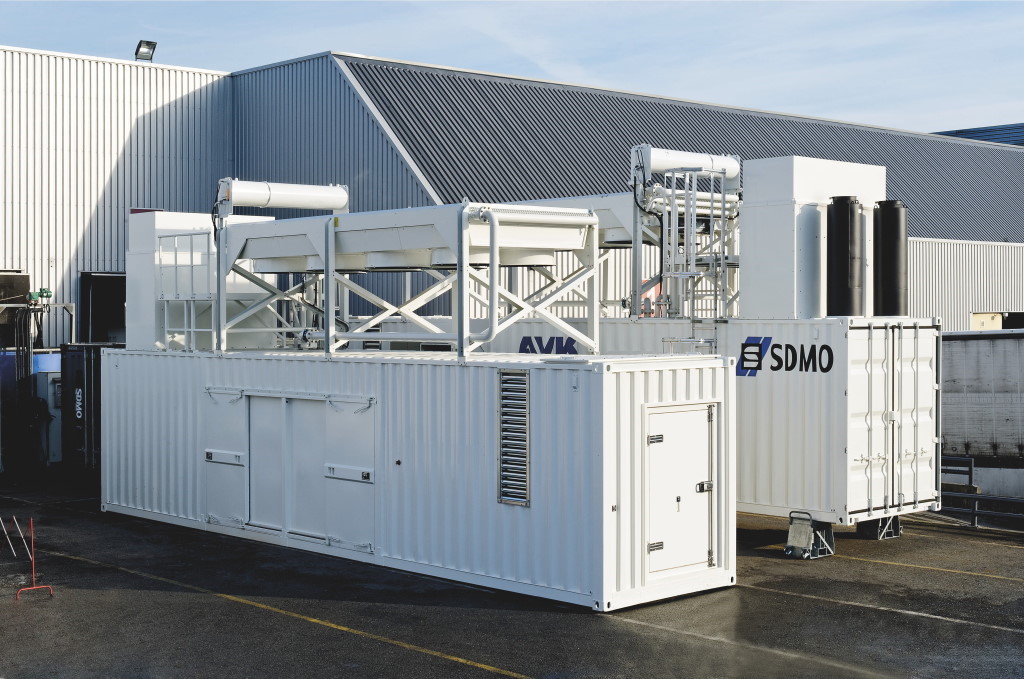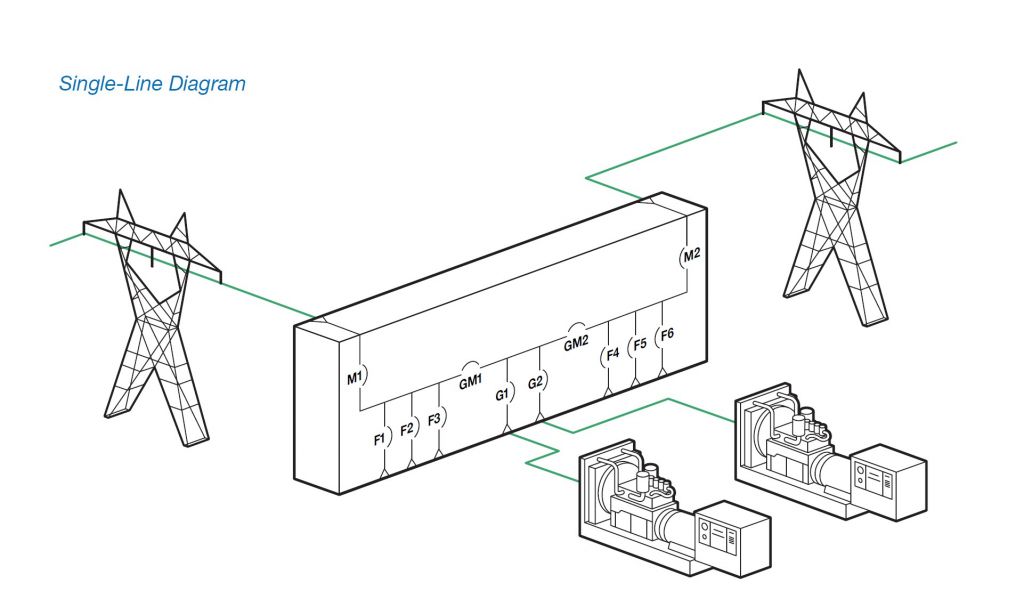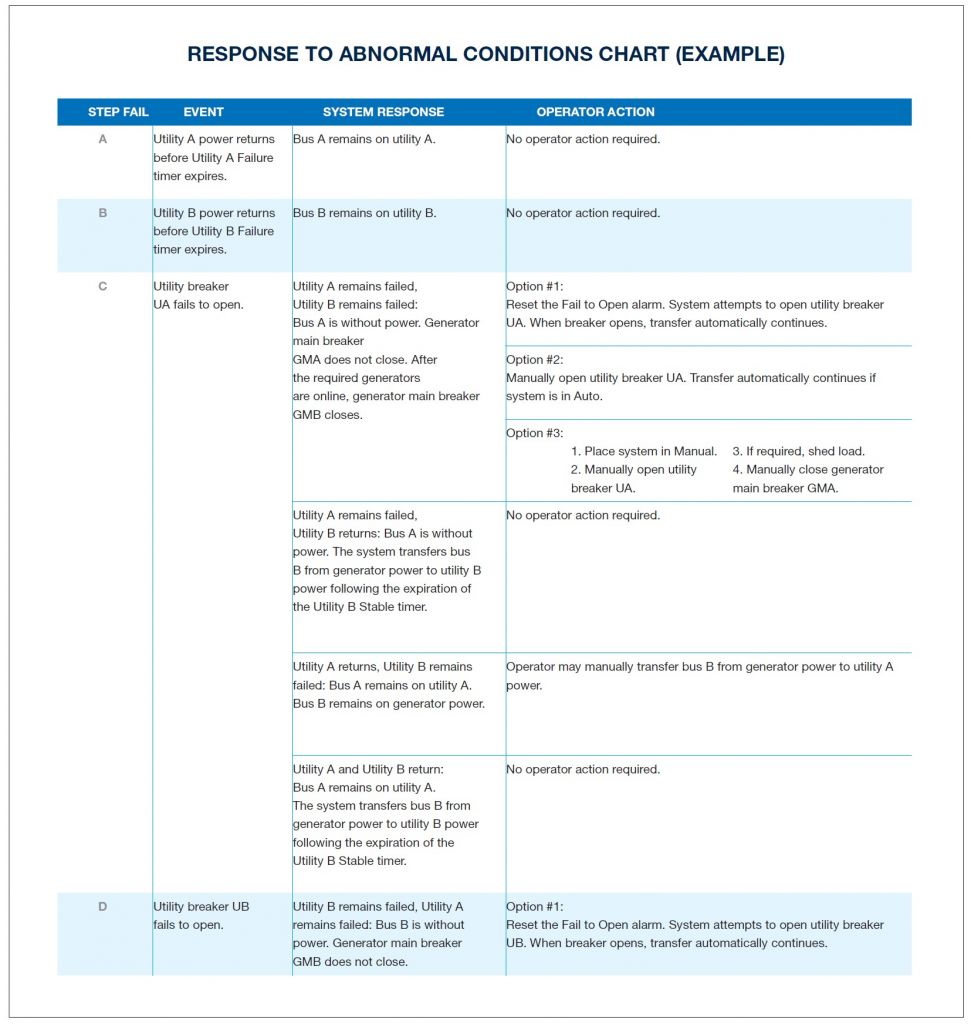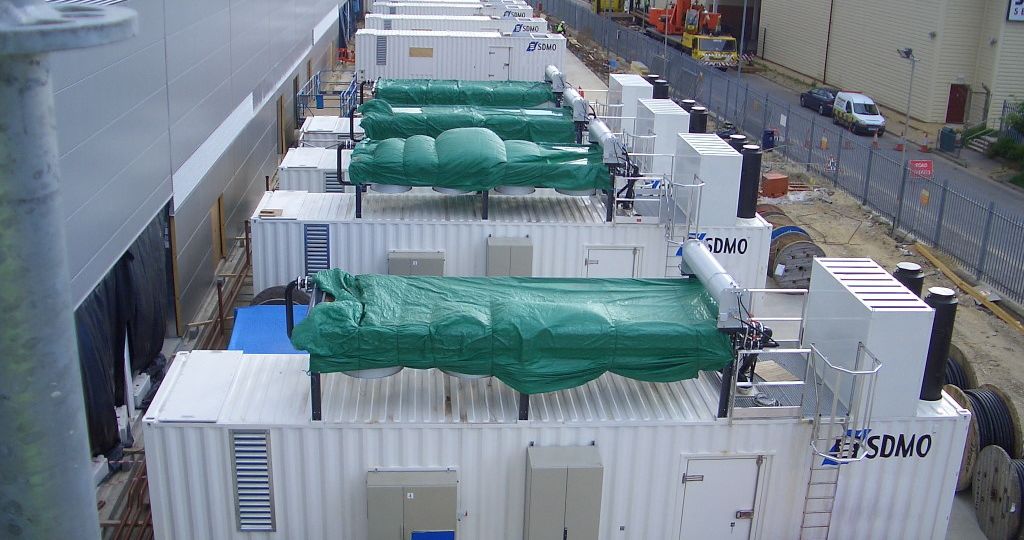Designing and implementing a paralleling switchgear system can be complex due to the unique requirements of each power system. To address these challenges and reduce ambiguity during the design and operation phases, Kohler Power Systems has developed comprehensive sequence charts. These charts visualized in a step-by-step manner, document how a system will respond to both normal operations and system failures, ensuring no surprises during operation.
Crafting a detailed sequence of operation is critical when designing a paralleling switchgear system. Traditional narrative-based sequences often fail to clearly depict the timing of events or how the system responds to failures. Kohler’s unique chart-based sequences offer a plethora of benefits, including clear step-by-step procedures, precise timing, and responses to failure conditions. These multipurpose charts can be utilized for submission reviews, test procedures, and operation and maintenance manuals, providing a unified reference point for understanding the system’s operation comprehensively.
This post elaborates on Kohler’s sequence chart approach, detailing the process of creating custom charts for individual systems, and highlighting their benefits in design, testing, and training.

Designing a paralleling switchgear system involves four distinct stages:
I. CREATING THE SINGLE-LINE DRAWING: Single-line drawings illustrate the connections between electrical system components and the routes through which power can travel. This step is crucial as it forms the foundation of the system’s layout.
II. ESTABLISHING THE SEQUENCE OF OPERATION: The sequence of operation describes the transition steps the system undertakes between states, such as switching from utility power to generator power. A well-documented sequence includes normal operations and alternate sequences for failure scenarios.
III. SELECTING CONTROLS: Selecting controls involves choosing the appropriate automatic and manual controls that facilitate the specified sequences, enable operator interaction, and provide necessary metering and protection. This step requires careful consideration of the controls’ level of redundancy and reliability.
IV. DETERMINING THE SWITCHGEAR STRUCTURE: The structure of the paralleling switchgear lineup is the physical representation of the single line. It contains the circuit breakers, controls and meters.
Traditional Narrative-Based Sequence of Operation.

Section 1: Modes of Operation.
1.1 Emergency Mode.
1.1.1 Loss of Utility.
When utility is lost, the PLC starts an engine start delay timer. Upon timer expiration, the following sequence occurs:
The utility breaker opens.
Generators start.
The first generator reaching 90% rated voltage and frequency closes onto the bus, employing first-on logic to prevent simultaneous closure.
The second generator synchronizes and closes its breaker.
With both generators online, the tie breaker closes.
Note: Operators can preset the system to automatically signal a load shed and close the tie breaker if the second generator fails.
If in AUTO mode, the system manages generator usage based on load demand.
If overloaded or a generator fails, normally open dry contacts signal downstream loads to shed.
1.1.2 Return of Utility
The return to utility process is governed by the utility control switch: Manual: The system stays on generator power until the operator presses the return or auto pushbutton, bypassing the utility stable timer. Auto: Upon utility return, a stable timer starts. When expired, the system initiates the return sequence. Return: Pressing the return pushbutton initiates the utility sequence if utility power is available.
- Open Transfer Mode
- The tie breaker and generator breakers open.
- The utility breaker closes post-timer expiration.
- Generators shut down after cooling.
- Closed Transfer Mode
- Generators synchronize with the utility.
- The utility breaker closes upon synchronization.
- Generators gently reduce load (soft unload).
- Tie and generator breakers open when the power flow across the tie
- breaker reaches its unloaded trip point.
- Generators shut down after cooling.

Kohler Chart-Based Sequence of Operation
SEQUENCE CHART (EXAMPLE):

Following these stages sequentially ensures cohesive project development, necessitating periodic review and adjustments to the sequence and single-line diagram as needed. For example, adding a bus tie breaker to the single-line diagram would require sequence updates to reflect its integration and function.
NEW APPROACH – SEQUENCE CHARTS.
Kohler’s innovative chart-based approach brings clarity and precision to documenting the sequence of operation. These charts are particularly beneficial for intricate projects involving multiple utilities by providing:
- Clear understanding of system responses during normal and failure conditions.
- An intuitive, easy-to-read alternative to standard flowcharts.
- Explicit documentation of system responses, timing, and actions for operators.
- A thorough checklist for testing and commissioning paralleling switchgear systems.
- Each sequence features two charts: one detailing standard steps and another covering responses to abnormal conditions.
THE FIVE STEPS IN CREATING A SEQUENCE CHART.

1. Determine the Initial State: Define the status of each breaker and power status of each bus in the system during normal operations.
2. Define the Triggering Event: Identify the event that initiates the sequence, such as a remote start signal, utility out of tolerance, or operator action.
3. List Each Event and Corresponding Response: Document each step and the corresponding system response required for transitioning from the initial to the desired state.
4. List the Final State: Record the final configuration of each breaker and the power status of each bus in the system.
5. Determine “If Fail” Scenarios: Identify potential failure points in each response, such as a breaker not opening or closing, and outline system responses and operator actions to address these scenarios.
SEQUENCE CHART (EXAMPLE):
INITIAL STATE: UA, X; Bus A, E; GMA, O; Gen Bus, D; GMB, O; Bus B, E; UB, X
STEP 1:
EVENT: Utility A and B out of tolerance. RESPONSE: Start failure timers for Utility A and B. If fail: A, B. STEP 2:
EVENT: Expiry of both failure timers or one while the other is active. RESPONSE: Open utility breakers UA, UB. Start all available generators. If fail: C, D.
STEP 3:
EVENT: UA open. RESPONSE: Shed loads on Bus A based on Load-Management settings. Start Bus A Open Transfer timer.
STEP 4:
EVENT: UB open. RESPONSE: Shed loads on Bus B based on Load-Management settings. Start Bus B Open Transfer timer.
STEP 5:
EVENT: First generator achieves rated voltage and frequency. RESPONSE: Close first generator breaker. If fail: E, F.
STEP 6:
EVENT: Remaining generators achieve rated voltage and frequency. RESPONSE: Synchronize and close their circuit breakers. If fail: E, F.
STEP 7:
EVENT: Required generators online and Bus A Open Transfer timer expired. RESPONSE: Close generator main breaker GMA. If fail: G.
STEP 8:
EVENT: GMA closed. RESPONSE: Bus A on generator power. Stop GOL Bypass timer.
STEP 9:
EVENT: Generator Stabilization timer and Bus B Open Transfer timer expired. RESPONSE: Start Generator Stabilization timer. Close GMB. If fail: H.
STEP 10:
EVENT: GMB closed. RESPONSE: Bus B on generator power. If fail: H.
STEP 11:
EVENT: Both buses on generator power. RESPONSE: Add loads to Buses A and B per Load-Management settings. Generator Management activates if in AUTO mode and all loads are added. If fail: I.
FINAL STATE: UA, O; Bus A, E; GMA, X; Gen Bus, E; GMB, X; Bus B, E; UB, O
RESPONSE TO ABNORMAL CONDITIONS CHART (EXAMPLE)
STEP FAIL: A: Utility A power returns before Failure Timer expires. SYSTEM RESPONSE: Bus A remains on Utility A. OPERATOR ACTION: None required.
STEP FAIL: B: Utility B power returns before Failure Timer expires. SYSTEM RESPONSE: Bus B remains on Utility B. OPERATOR ACTION: None required.
STEP FAIL: C: Utility breaker UA fails to open. SYSTEM RESPONSE: Different paths based on conditions such as UA and UB status, including scenarios like Bus A without power, or manual interventions outlined in response schedules. OPERATOR ACTION: Options include resetting alarms, manual breaker operations, or designated manual sequence instructions.

THE PAYOFF OF KOHLER’S CHART-BASED APPROACH
Adopting Kohler’s chart-based sequence of operation provides a meticulous method to cover all potential scenarios during the design stage. It enhances equipment reliability, reduces onsite start-up time, and improves operational clarity. This approach ensures each stage is thoroughly documented without ambiguity, mitigating downtime due to unforeseen failures.
Kohler’s innovative approach to sequence of operations enables a more effective and reliable way to visualize and manage complex systems. By implementing this clear, step-by-step method, operational efficiency is significantly increased, providing a reliable roadmap for both routine operations and unexpected events.
Since 1920, Kohler has been a pioneer in power solutions, committed to producing reliable, intelligent products, backed by exemplary engineering and responsive after-sales support. With over 150 years of combined experience post the acquisition of SDMO, Kohler stands as one of the world’s foremost authorities in industrial power solutions, offering unparalleled global research, manufacturing, sales, service, and distribution networks.


